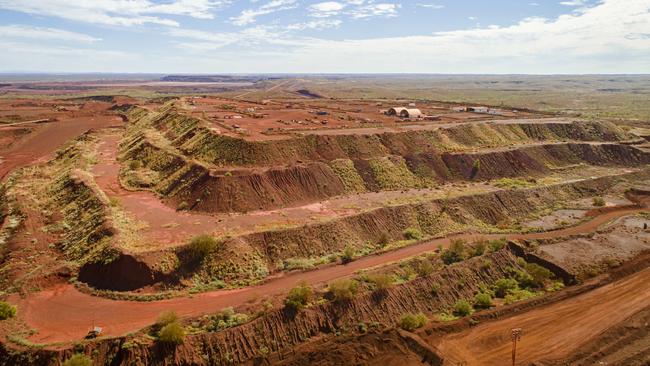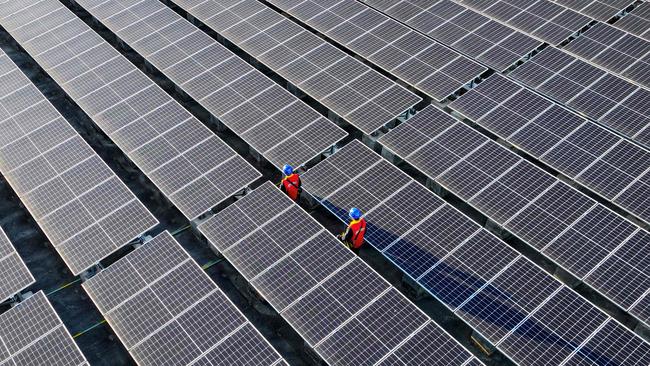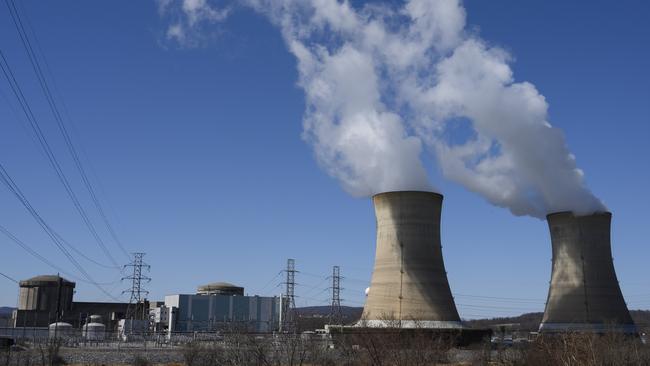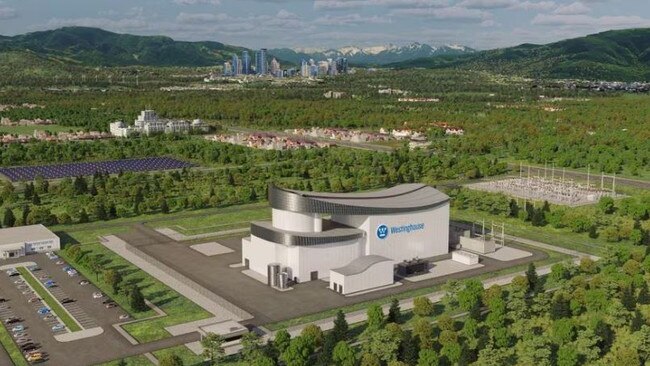Australia sitting on potential new goldmine as iron ore prices plummet
As the price of many minerals plummet – leaving Australia vulnerable – there could be one very fruitful solution.
Mining
Don't miss out on the headlines from Mining. Followed categories will be added to My News.
Can an emphasis on producing uranium fuel for the world’s reactors ease Australia’s vulnerability to price shocks from other staples such as iron ore, copper and nickel?
“The forces of demand driven by the global energy transition and supply limited by geopolitics are coalescing to make yet another mineral globally ‘critical’ — uranium,” argues adjunct professor Ian Satchwell of the Sustainable Minerals Institute at the University of Queensland.
“After decades of changeable and inconsistent policy, state and federal governments need to marshal the collective will if we are to maximise the potential contribution of Australia’s uranium to global decarbonisation, and to take advantage of booming price projections and economic opportunity,” he writes for the Australian Strategic Policy Institute (ASPI).
But the future of nuclear power generation, and therefore uranium demand, remains volatile.
It’s an inherently expensive process.
That’s due to the need to safely contain, and dispose of, its radioactive fuel.
And overly optimistic projections of the costs involved in achieving this have led to the abrupt cancellation of a flagship next-generation nuclear project – a Small Modular Reactor (SMR) being built in Idaho, United States.

Despite this, the nuclear and uranium industries remain bullish about the sector’s future.
A World Nuclear Association report states it expects demand for uranium to surge by 28 per cent over the next six years. And that will be driven by plans to extend the lives of existing reactors – and build new ones – to fill a critical role in the race to replace polluting coal and gas power generation.
“Australia and its states enthusiastically embrace opportunities to grow critical minerals production and pursue a clean hydrogen industry to help the world decarbonise,” argues Satchwell. “But we remain oddly ambivalent and inconsistent about uranium, another critical mineral key to the energy transition.”
What is a critical mineral?
What’s “critical” about a critical mineral? The definition appears to be as political as it is about guaranteeing the supply of scarce but vital elements for strained supply chains.
Solar panels, wind turbines, and batteries all need rare minerals with specific properties to produce their high-efficiency outputs.
The same applies to the high-technology components of many defence-related projects.
Being classified as “critical” gives producers extra leverage when seeking government subsidies and investment.
But nickel was not considered one of them when the Australian Federal Government drew up its original list in 2019. Then the completion of Indonesia’s China-funded-and-operated Nickel mining and refining facilities triggered a price collapse late last year, putting Australian producers under pressure.
Canberra added it to the critical minerals list earlier this month.
Uranium’s also not on Australia’s list.

But Australia does contain one-third of the world’s known supplies.
“In early 2024, Japan added uranium to its list of critical minerals, responding to greater demand driven by the restarting of nuclear power generation suspended in the wake of the Fukushima accident in 2011, and potential restrictions on supply, especially from Russia,” says Satchwell.
Powering the future
Nuclear reactors use the interaction of active atoms in close proximity to each other to generate heat. That heat is used to convert water into superheated steam. And that steam can drive the magnets of a turbine to produce electricity.
It’s the same process as coal and gas. Just with a fuel that doesn’t produce CO2 gas.
And the sustainable energy revolution has a problem.
Many estimates suggest wind and solar can supply up to 80 per cent of the world’s energy needs. But that final 20 per cent poses a particular hurdle.
Wind and solar are variable sources of supply. So both need to store excess energy somehow to power when the sun’s not shining, or the wind’s not blowing.

Batteries are expensive and have limited lives. And Australia’s lack of water makes pumped hydro (filling dams for hydro-electric generators) a limited solution.
New technologies such as the CSIRO’s heat batteries (storing heat from excess renewable electricity or solar-thermal power plants) offer simple but effective options.
Another is to use zero-emissions electricity to split water into hydrogen and oxygen, with the hydrogen being used to feed energy-intensive industries like Whyalla’s steel furnaces.
Nuclear power promises a consistent supply of such large amounts of electricity. And advocates insist the safety problems that produced the Soviet Union’s Chernobyl disaster and Japan’s Fukushima tsunami meltdown have been solved.
Market forces
The nuclear industry has placed considerable store in the concept of small modular reactors. It argues that these can be mass-produced to standardised failsafe designs to reduce costs. And their small size means they can power smaller sites, such as regional centres and remote mine sites.
The idea has been around for decades: small nuclear reactors have been fitted to US aircraft carriers and submarines since the 1960s.

However, the only commercial example of this technology approved for construction in the United States was abruptly cancelled late last year.
Ongoing cost increases and a resulting loss of customer interest are being blamed for its failure.
The NuScale Carbon Free Power Project (CFPP) in Idaho was supposed to demonstrate the idea’s economic viability. But cost blowouts led to a rise in promised deliverable electricity costs from $A88.5 per megawatt hour to $136/MWh.
Australia’s solar and wind power generators deliver electricity in the $50/MWh price range.
Civilian small reactors aren’t dead yet. Russia and China have one working example each. And other nations, such as Romania, continue to invest in the idea.
But even the three new large-scale nuclear power stations being built in Europe are all many years behind schedule and billions over budget because of the safety and engineering challenges involved.
And that translates to higher electricity prices for customers.
Crystal ball gazing
The World Nuclear Association (WNA) says there isn’t enough uranium being mined to meet increasing demand.
“From the beginning of the next decade, planned mines and prospective mines, in addition to increasing quantities of unspecified supply, will need to be brought into production,” it said in a report released late last year.
It calculates nuclear energy demand will rise by 14 per cent by 2030 before surging some 76 per cent by 2040.
“Several countries with large reactor fleets, such as Canada, France, Japan, Russia and Ukraine, are allowing existing plants to operate for up to 60 years, and in the USA, to 80 years,” the report adds.
That means demand for uranium will increase from 65,650 tonnes this year to 83,840 tonnes in 2030 and 130,000 tonnes in 2040.
That, says Satchwell, presents an opportunity for Australia.
“Exploration efforts of the past 15 years have generated detailed knowledge of deposit geology, allowing for rapid reserves delineation, feasibility assessment and development should politics, policies and approval processes allow,” he argues.
Jamie Seidel is a freelance writer | @JamieSeidel
Originally published as Australia sitting on potential new goldmine as iron ore prices plummet





